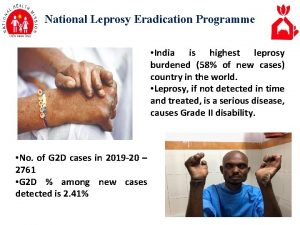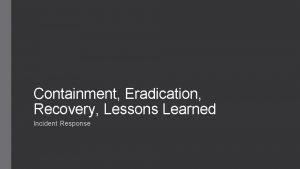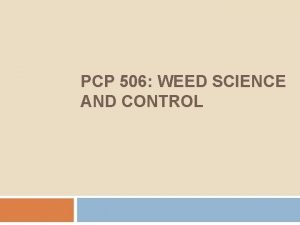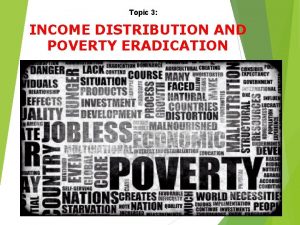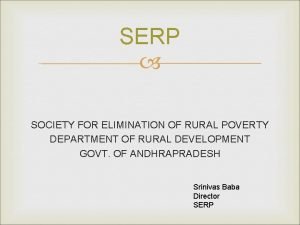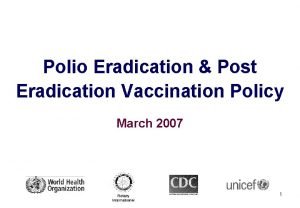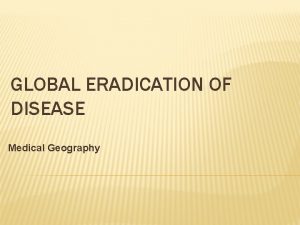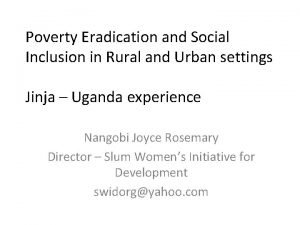Eradicating Extreme Rural Poverty SDG 1 Poverty Eradication





- Slides: 5

Eradicating Extreme Rural Poverty

SDG 1, Poverty Eradication • SDG 1, is the most ambitious goal set by the 2030 Agenda, Target is ending poverty in all its forms, everywhere, in the next 11 years. • This Goal includes eradicating extreme poverty, then The question is: How can we achieve target 1. 1 and • What are the main Challenges? • How overcome the main challenges?

Major characteristics of extreme poverty: • Extreme poverty is complex and multidimensional phenomena, but simply defined as those individuals earning less than USD 1. 25 a day. • 800 million people (about 10 percent of the global population) are living in extreme poverty and about 80 percent extreme poor live in rural areas. • Though considerable progress has been made over the last three decades in reducing extreme poverty and overall poverty, the welfare level of those who have remained at the bottom of the income or consumption distribution has stayed the same. • Those who have been “left behind” face greater vulnerabilities and structural constraints, which prevent them from benefiting from overall economic growth and development. • Extreme poor often “hidden” in non-poor families, communities and even countries due to intra-household dynamics and localised inequality.

• Their incomes depend greatly on agricultural activities, either from work on their farms, or agricultural wage employment. It is this reliance on agriculture that makes the rural extreme poor highly vulnerable to climatic and market shocks and natural events. • The rural extreme poor are often geographically concentrated in marginal rural areas (high mountain, pastoral, arid, rainforest jungle, small islands) with low population densities, poor agroecological endowments, limited access to markets and few sources of employment and investment opportunities. • It is revealed through systemical economic, social and political marginalization and exclusion, different manifestations of malnutrition, poor living conditions, lack of access to basic services, resources and employment opportunities.

Challenges in General could be categorised in three different dimensions: Epistemological, Methodological and Managerial. • Epistemological Challenges, which help us to confront complexity and direct us to accurate understandings to come up with right decisions and policies: • What is definition of the phenomena of multi dimensional extreme poverty? • Who’s Reality counts? Gov. , Practitioners, policy makers, local communities. • Contextual corporate conceptual frame work to have ‘one reality’. • Methodological, which reflects right measures and how to address the real issue: • Application of systems thinking and systems analysis rather than reductionist conventional methodologies. • What are the major precise indicators which presents the target? • How to measure quantitative and qualitative measures of extreme poverty? • Governance and Managerial Challenges; • More coordination and strategic synergy in implementation. • Long term commitments, processes and plans. • Pro-poor Development and income generating opportunities.
